人教版(新课程标准)选修六 Unit 5 The power of nature Reading 课件(25张PPT)
文档属性
| 名称 | 人教版(新课程标准)选修六 Unit 5 The power of nature Reading 课件(25张PPT) | 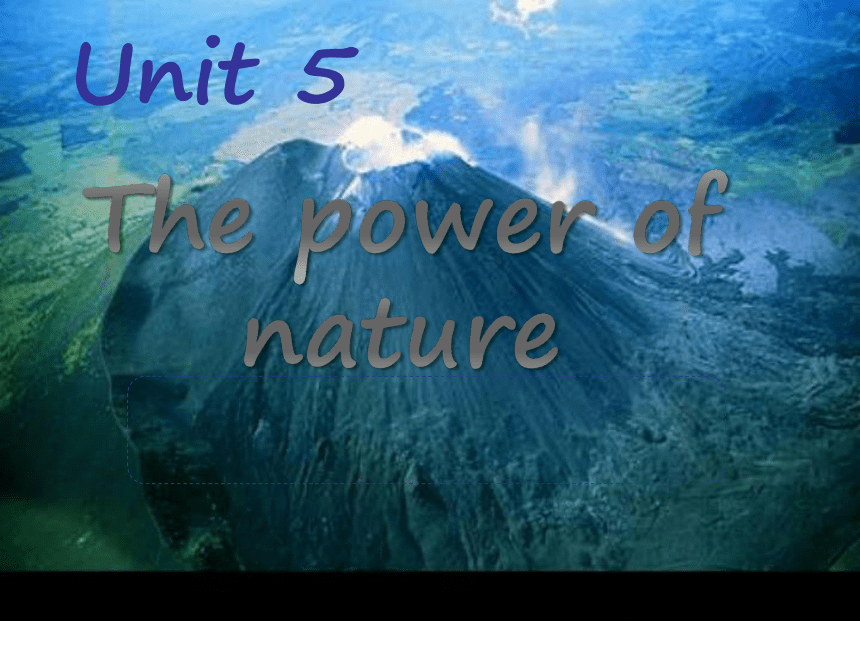 | |
| 格式 | pptx | ||
| 文件大小 | 289.7KB | ||
| 资源类型 | 教案 | ||
| 版本资源 | 人教版(新课程标准) | ||
| 科目 | 英语 | ||
| 更新时间 | 2022-12-18 20:48:53 | ||
图片预览

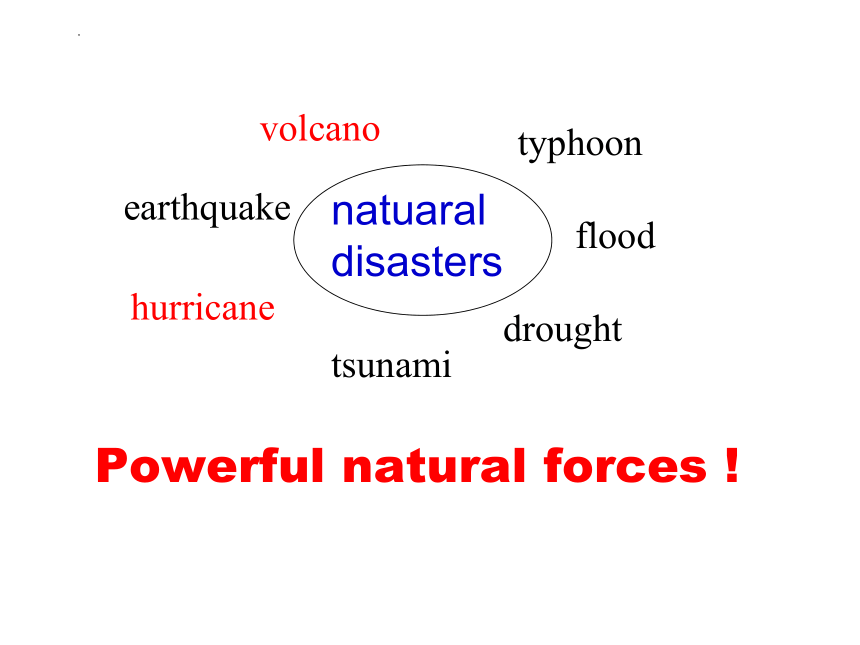
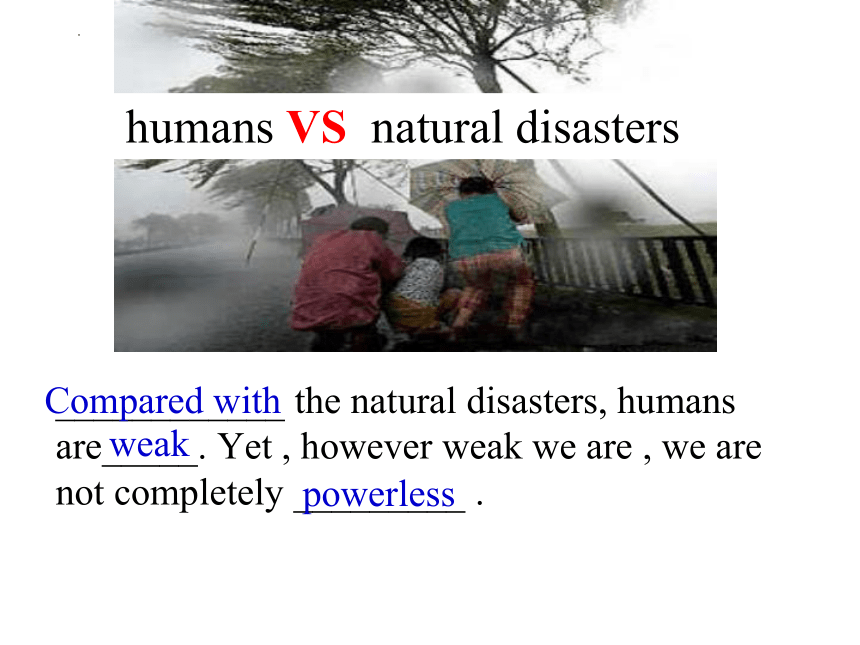
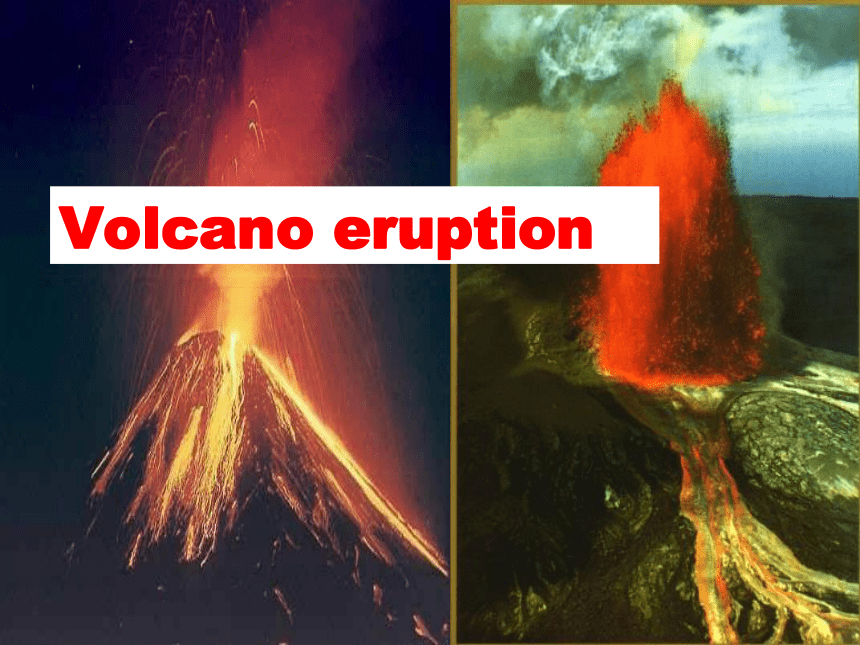
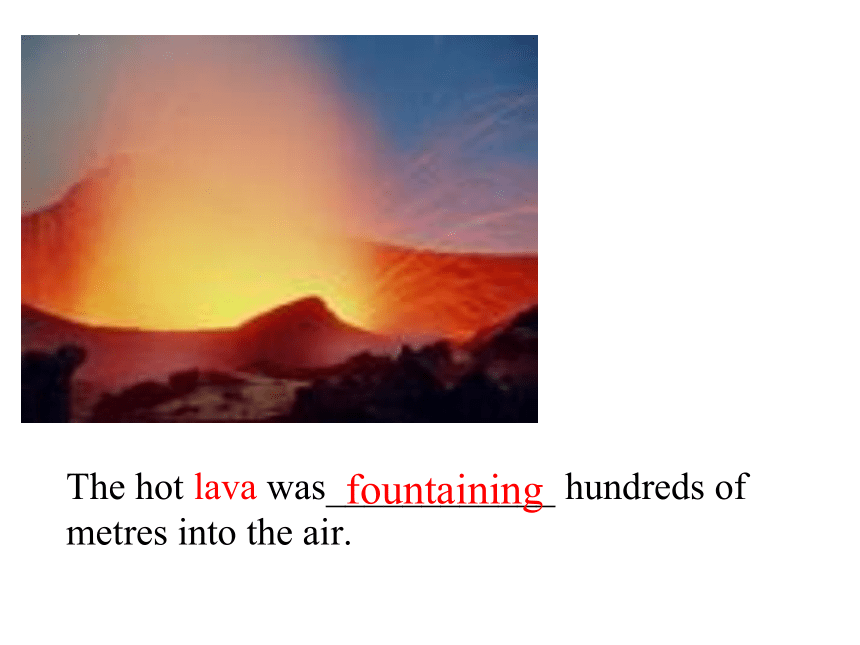
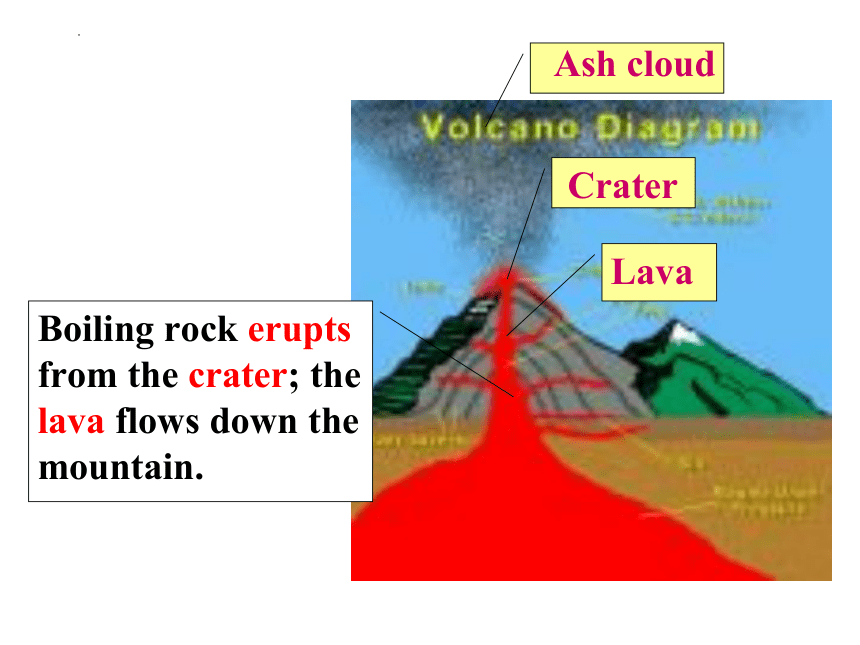
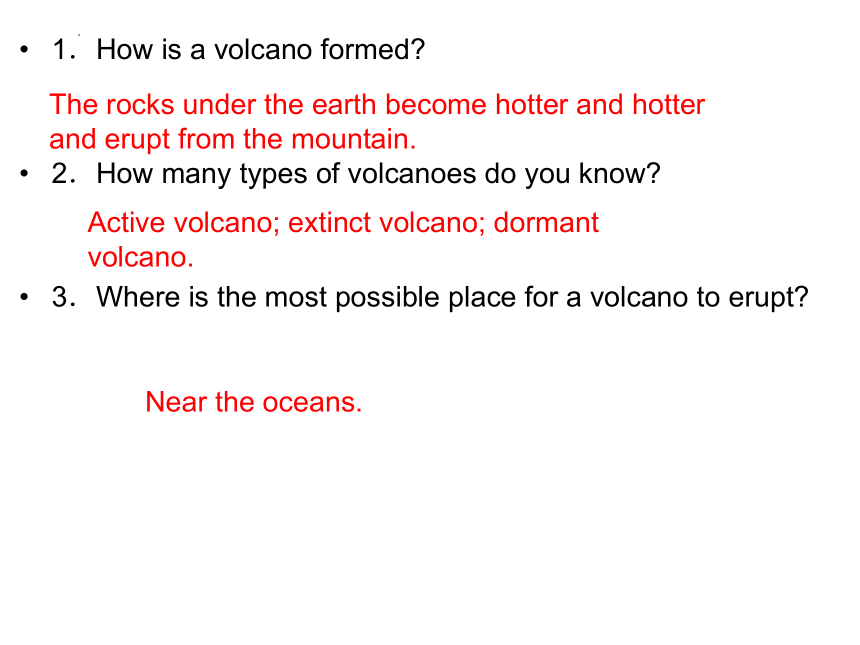
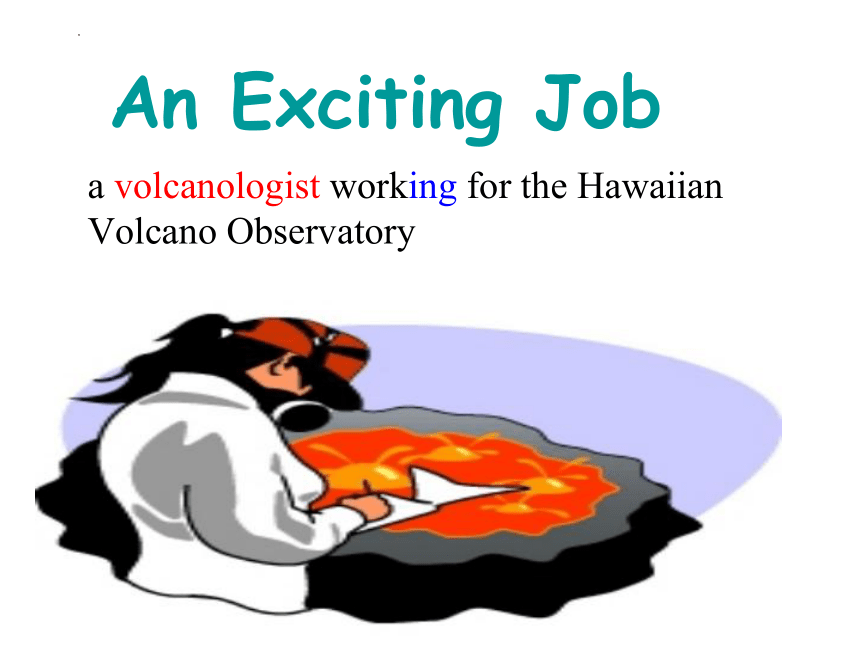
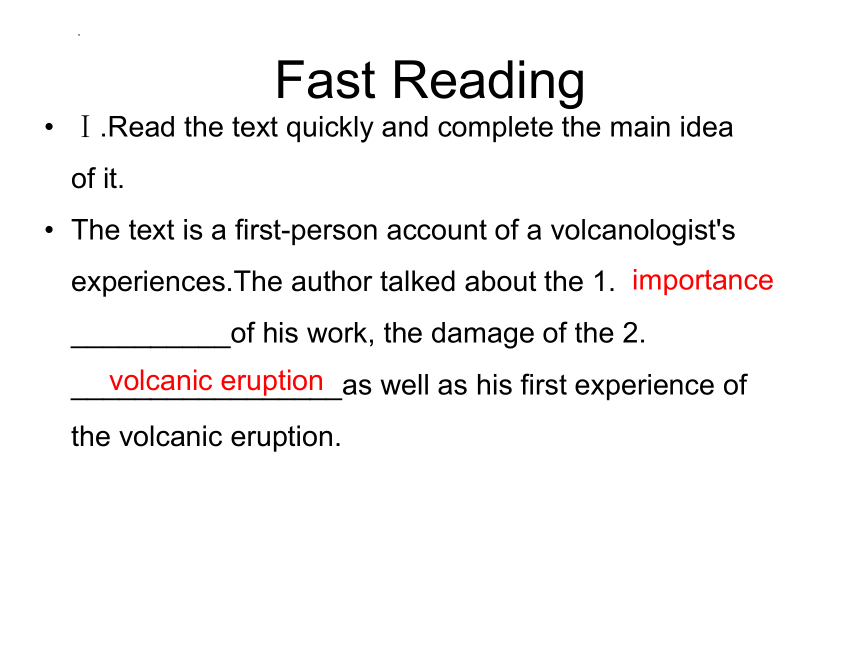
文档简介
(共25张PPT)
Unit 5
The power of nature
natuaral disasters
typhoon
flood
hurricane
tsunami
drought
earthquake
volcano
Powerful natural forces !
humans VS natural disasters
____________ the natural disasters, humans are_____. Yet , however weak we are , we are not completely _________ .
Compared with
weak
powerless
Volcano eruption
The hot lava was____________ hundreds of metres into the air.
fountaining
Boiling rock erupts from the crater; the lava flows down the mountain.
Lava
Crater
Ash cloud
1.How is a volcano formed
2.How many types of volcanoes do you know
3.Where is the most possible place for a volcano to erupt
The rocks under the earth become hotter and hotter and erupt from the mountain.
Active volcano; extinct volcano; dormant volcano.
Near the oceans.
An Exciting Job
a volcanologist working for the Hawaiian Volcano Observatory
Fast Reading
Ⅰ.Read the text quickly and complete the main idea of it.
The text is a first person account of a volcanologist's experiences.The author talked about the 1. __________of his work, the damage of the 2. _________________as well as his first experience of the volcanic eruption.
importance
volcanic eruption
1. What does the author think of his job (para.1)
I have the greatest job in the world .
Danger excites me and makes me feel alive .
I help protect ordinary people from the volcano .
That I help protect ordinary people from the volcano is the most important thing about my job.
2. What do a volcanologist do (para.2)
Having collected and evaluated the information…
to predict where … how…
warn people in the path of the lava to leave their houses
Collecting information for a database…
Part 1(Para 1-2)
Part 2(Para 3-4)
Part 3(Para 5)
The writer’s _____ and its importance .
Main idea
job
3. What damage does a volcano cause (para.3)
boiling rock erupts…and crashes back…( less damage )
The lava causes far more damage …
that flows…down…
4. What made he realize that an eruption occurred (para.3)
My bed began shaking…
My bedroom became as bright as day
Red hot lava was fountaining …
an absolutely fantastic sight
5. What did the scientists do after the eruption (para.4)
dropped
as close as
possible to
the crater
made
our way to
the edge
of
the crater
protective suits, helmets, big boots …
put on
climbed down into
the crater to collect some lava
Part 1(Para 1-2)
Part 2(Para 3-4)
Part 3(Para 5)
The writer’s _____ and its importance .
Main idea
job
The writer’s _________ of watching the volcano eruption .
experience
6. What does the writer find impressive about volcanoes even after studying them for many years (para.5)
the beauty as well as the potential to cause great damage
The author is impressed by the beauty of the eruption and also by its potential to cause great damage.
Part 1(Para 1-2)
Part 2(Para 3-4)
Part 3(Para 5)
The writer’s _____ and its importance .
Main idea
job
The writer’s _________ of watching the volcano eruption .
experience
The reasons for the writer’s _________ about his job .
enthusiasm
The writer doesn’t mind the occasional danger of his job because ______.
he travels to unusual places and meets interesting people from all over the world .
he likes the different ways of working
he is excited about dangers and feels alive
he thinks his job is the most important
2. What did the author do after he was appointed as a volcanologist
He collected information about Mount Kilauea on the spot .
He analyzed the data and predicted where the lava would flow .
He persuaded people to move their homes out of the path of the lava .
He saved people who were covered with lava .
3. Which of the following description of an eruption is NOT correct
It causes great damage near the top of Mount Kilauea .
The places where the lava flows are usually seriously damaged .
It can be seen from a distance , even in a house garden .
The lava can fountain hundreds of metres .
4. When the author went to the location of the eruption , he _______ .
asked two other scientists to guide him
went close to the crater formed during the eruption
was wearing protective suits the same as the spaceman
collected some lava for further study
5. We can infer from the passage that ________.
the author thinks volcanoes are full of mystery
Hawaii is the place with the most active volcanoes
people can mistake an eruption for an earthquake
it’s safe for people to go near a crater after an eruption
Mount Kilauea基拉韦厄火山, the world's most active volcano, is on the island of Hawaii.It is not far from Mauna Loa莫纳罗亚山, the largest volcano in the world.Mauna Loa and Mount Kilauea together form the Volcanoes National Park in Hawaii.
Mount Kilauea has produced lava more than fifty times in the last one hundred years.Sometimes the lava moves slowly.At other times it pours out very fast as a huge amount of pressure forces it from the volcano.During these times, it moves almost as quickly as water moving down the side of mountain.Sometimes Mount Kilauea produces a large amount of lava that seems like rivers of fire.When the lava from Mount Kilauea reaches the ocean, its fierce heat produces a great amount of steam that rises into the air.The lava is so hot that it continues to burn underwater for some time.The lava from Mount Kilauea continues to add
land to the island as the volcanoes of Hawaii have always done.It was these volcanoes that formed the islands of Hawaii.Most of the time the lava of Mount Kilauea seems to move peacefully toward the ocean.Yet it is not as peaceful as it seems from a distance.
In recent years the lava destroyed one small town on the island.The boiling rock slowly covered the town.It blocked roads and destroyed them.Nothing can stop the lava of Mount Kilauea.
Experts say the volcanoes of Mauna Loa and Mount Kilauea are a serious threat to property (财产) on many parts of the island.They also say the volcanoes of the island of Hawaii are proof that the changing environment of the earth is and will always remain beyond human control.
Unit 5
The power of nature
natuaral disasters
typhoon
flood
hurricane
tsunami
drought
earthquake
volcano
Powerful natural forces !
humans VS natural disasters
____________ the natural disasters, humans are_____. Yet , however weak we are , we are not completely _________ .
Compared with
weak
powerless
Volcano eruption
The hot lava was____________ hundreds of metres into the air.
fountaining
Boiling rock erupts from the crater; the lava flows down the mountain.
Lava
Crater
Ash cloud
1.How is a volcano formed
2.How many types of volcanoes do you know
3.Where is the most possible place for a volcano to erupt
The rocks under the earth become hotter and hotter and erupt from the mountain.
Active volcano; extinct volcano; dormant volcano.
Near the oceans.
An Exciting Job
a volcanologist working for the Hawaiian Volcano Observatory
Fast Reading
Ⅰ.Read the text quickly and complete the main idea of it.
The text is a first person account of a volcanologist's experiences.The author talked about the 1. __________of his work, the damage of the 2. _________________as well as his first experience of the volcanic eruption.
importance
volcanic eruption
1. What does the author think of his job (para.1)
I have the greatest job in the world .
Danger excites me and makes me feel alive .
I help protect ordinary people from the volcano .
That I help protect ordinary people from the volcano is the most important thing about my job.
2. What do a volcanologist do (para.2)
Having collected and evaluated the information…
to predict where … how…
warn people in the path of the lava to leave their houses
Collecting information for a database…
Part 1(Para 1-2)
Part 2(Para 3-4)
Part 3(Para 5)
The writer’s _____ and its importance .
Main idea
job
3. What damage does a volcano cause (para.3)
boiling rock erupts…and crashes back…( less damage )
The lava causes far more damage …
that flows…down…
4. What made he realize that an eruption occurred (para.3)
My bed began shaking…
My bedroom became as bright as day
Red hot lava was fountaining …
an absolutely fantastic sight
5. What did the scientists do after the eruption (para.4)
dropped
as close as
possible to
the crater
made
our way to
the edge
of
the crater
protective suits, helmets, big boots …
put on
climbed down into
the crater to collect some lava
Part 1(Para 1-2)
Part 2(Para 3-4)
Part 3(Para 5)
The writer’s _____ and its importance .
Main idea
job
The writer’s _________ of watching the volcano eruption .
experience
6. What does the writer find impressive about volcanoes even after studying them for many years (para.5)
the beauty as well as the potential to cause great damage
The author is impressed by the beauty of the eruption and also by its potential to cause great damage.
Part 1(Para 1-2)
Part 2(Para 3-4)
Part 3(Para 5)
The writer’s _____ and its importance .
Main idea
job
The writer’s _________ of watching the volcano eruption .
experience
The reasons for the writer’s _________ about his job .
enthusiasm
The writer doesn’t mind the occasional danger of his job because ______.
he travels to unusual places and meets interesting people from all over the world .
he likes the different ways of working
he is excited about dangers and feels alive
he thinks his job is the most important
2. What did the author do after he was appointed as a volcanologist
He collected information about Mount Kilauea on the spot .
He analyzed the data and predicted where the lava would flow .
He persuaded people to move their homes out of the path of the lava .
He saved people who were covered with lava .
3. Which of the following description of an eruption is NOT correct
It causes great damage near the top of Mount Kilauea .
The places where the lava flows are usually seriously damaged .
It can be seen from a distance , even in a house garden .
The lava can fountain hundreds of metres .
4. When the author went to the location of the eruption , he _______ .
asked two other scientists to guide him
went close to the crater formed during the eruption
was wearing protective suits the same as the spaceman
collected some lava for further study
5. We can infer from the passage that ________.
the author thinks volcanoes are full of mystery
Hawaii is the place with the most active volcanoes
people can mistake an eruption for an earthquake
it’s safe for people to go near a crater after an eruption
Mount Kilauea基拉韦厄火山, the world's most active volcano, is on the island of Hawaii.It is not far from Mauna Loa莫纳罗亚山, the largest volcano in the world.Mauna Loa and Mount Kilauea together form the Volcanoes National Park in Hawaii.
Mount Kilauea has produced lava more than fifty times in the last one hundred years.Sometimes the lava moves slowly.At other times it pours out very fast as a huge amount of pressure forces it from the volcano.During these times, it moves almost as quickly as water moving down the side of mountain.Sometimes Mount Kilauea produces a large amount of lava that seems like rivers of fire.When the lava from Mount Kilauea reaches the ocean, its fierce heat produces a great amount of steam that rises into the air.The lava is so hot that it continues to burn underwater for some time.The lava from Mount Kilauea continues to add
land to the island as the volcanoes of Hawaii have always done.It was these volcanoes that formed the islands of Hawaii.Most of the time the lava of Mount Kilauea seems to move peacefully toward the ocean.Yet it is not as peaceful as it seems from a distance.
In recent years the lava destroyed one small town on the island.The boiling rock slowly covered the town.It blocked roads and destroyed them.Nothing can stop the lava of Mount Kilauea.
Experts say the volcanoes of Mauna Loa and Mount Kilauea are a serious threat to property (财产) on many parts of the island.They also say the volcanoes of the island of Hawaii are proof that the changing environment of the earth is and will always remain beyond human control.
